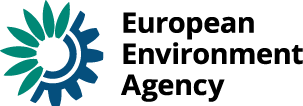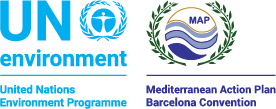Indicators and assessment
Environmental indicators are essential tools for assessing environmental trends, tracking progress against objectives and targets, evaluating the effectiveness of policies and communicating complex phenomena.
In the framework of Horizon 2020 initiative for a cleaner Mediterranean, a review mechanism has been developed to monitor the progress of the implementation of the H2020 initiative, particularly through appropriate information-sharing systems that are easily accessible to all Mediterranean partners. The H2020 Review and Monitoring (RM) group, co-chaired by the EEA and UNEP/MAP, supports the development of a coherent indicator-based reporting process for H2020 that improve knowledge on the Mediterranean environment and help to prepare State of the Mediterranean marine and coastal environment report.
A second H2020 indicator-based assessment is planned in 2019 and as agreed by the H2020 Steering group in December 2014 the scope of H2020 initiative was extended to addresses marine litter and hazardous waste and also to further work on the set of H2020 indicators.
The initial set of H2020 indicators selected during the first phase of the initiative (2007-2013) has been refined in 2017-2018 to reflect the new priorities as identified in the agreed work programme of Horizon 2020 for the second phase of the initiative (2015-2020).
How are indicators implemented?
Implementing the indicators is a part of process from data to knowledge which is defined as MDIAK (Monitoring, Data, Information, Assessment and Knowledge) chain. In that context, indicators require to get a set of harmonized and integrated data to be processed in accordance with predefined methodological specifications (Figure 1). The first step is to prepare relevant, reliable, robust and harmonized data which might come from different agencies and ministries. The second step is to compute the indicator in line with agreed methodology. And the last step is to interpret objectively with the outputs of the indicator computation by following certain type of analytical frameworks such as DPSIR (Driving forces, Pressures, State, Impact and Response).
Figure 1: Work steps from data to the assessment
How are indicators used?
Indicators generally simplify in order to make complex phenomena quantifiable, so that the information can be communicated with the public at large. They also provide the basis for identification and assessment of environmental problems and the dominant threats at different levels e.g. local, regional or global. Indicators provide also information necessary to enable actions/policies to be taken to improve the environmental state of the water bodies and to ensure sustainable development.
Horizon 2020 Indicators - Phase II (2015-2020)
The H2020 indicators selected for the second phase of H2020 (2015-2020) are listed in the table below. For each indicators, a detailed Indicator Specification Factsheets has been developed, in which the methodological aspects, such as definition, units, geographical and temporal coverage, methods for gap filling and uncertainties are clearly documented.
|
H2020 Thematic Area |
Concept note |
Indicator nr/Title |
Indicator Specification Factsheets |
Data Dictionary |
|
|
English (March 2018)
|
1.1 |
Municipal waste composition |
IND 1 FR |
Waste DD - EN (V1.3.2) |
|
|
1.2 |
Plastic waste generation per capita |
||||
|
2.1 |
Waste collection |
IND 2 FR |
|||
|
2.2 |
“Environmental control” (Waste controlled treatment or disposal) |
||||
|
2.3 |
Waste resource recovery |
||||
|
Q |
“Software of waste management” (Policies) |
IND Q FR |
|||
|
WATER |
3.1 |
Share of total, urban and rural population with access to an improved sanitation system (ISS) |
Water DD - EN (V6) |
||
|
3.2 |
Proportion of population using safely managed sanitation services (SMSS) |
||||
|
4.1 |
Municipal wastewater collected and wastewater treated |
||||
|
4.2 |
Direct use of treated municipal wastewater |
||||
|
4.3 |
Release of nutrients from municipal effluents |
||||
|
5.1 |
Nutrient concentrations in transitional, coastal and marine waters |
||||
|
5.2 |
Bathing water quality |
||||
|
INDUSTRIAL EMISSIONS |
6.1 |
Release of nutrients from industrial sectors |
|
IE DD - EN (V3) |
|
|
6.2 |
Release of toxic substances from industrial sectors
|
||||
|
6.3 |
Industrial hazardous waste disposed in environmentally sound manner |
||||
|
6.4 |
Compliance measures aiming at the reduction and/or elimination of pollutants generated by industrial sectors |
||||
| SOCIO ECONOMIC | SE DD - EN (V1) |
Download all Indicator Specification EN, all indicator Specification FR, WASTE EN, WATER EN / FR, INDUSTRIAL EMISSIONS EN / FR
Download all Data Dictionaries
Ressources - Guiding documents
Template for indicator assessment
Country level indicator assessment approach WATER, WASTE & ML, INDUSTRIAL EMISSIONS
Overview of H2020/NAP reporting - July 2020
H2020 Indicator - Phase I (207-2013)
The H2020 indicators selected during the first phase of the initiative (2007-2013) are listed below and for each indicators, detailed Indicator Specification Factsheets has been developed, in which the methodological aspects, such as definition, units, geographical and temporal coverage, methods for gap filling and uncertainties are clearly documented. A preliminary assessment of those indicators has been also carried out.
Waste:
1. Municipal waste generation - With additional information on municipal waste composition - Indicator Factsheet - Indicator Assessment
2. Collected and treated municipal waste - With additional information on: Number, type and location of landfills - Indicator Factsheet - Indicator Assessment
Water:
3. Share of total, urban and rural population with access to an improved sanitation system - Indicator Factsheet - Indicator Assessment
4. Volume of wastewater collected, of which volume of wastewater treated, including type of treatment.- Indicator Factsheet - Indicator Assessment
5. Nutrient concentrations in transitional, coastal and marine waters .- Indicator Factsheet - Indicator Assessment
Industrial Emissions:
6. Release of toxic substances and nutrients from industrial sectors.- Indicator Factsheet - Indicator Assessment
A key achievement for the ENP South region was the first H2020 assessment reporting exercise on the core set of regional indicators and the production – jointly with UNEP/MAP – of the ‘Horizon 2020 Mediterranean report – Toward shared environmental information systems’, produced for the Union for the Mediterranean (UfM) Ministerial meeting on Environment and Climate Change held on 13 May 2014 in Athens, Greece.
A second H2020 indicator-based assessment is planned in 2019 and as agreed by the H2020 Steering group in December 2014 the scope of H2020 initiative was extended to addresses marine litter and hazardous waste and also to further work on the set of H2020 indicators.
Data dictionary:
1. Municipal waste generation, collection and treatment
2. Wastewater collection and treatment
[1] Following Workshop on, Infrastructure and data management (4-5 October 2018), numbering has been adjusted.


